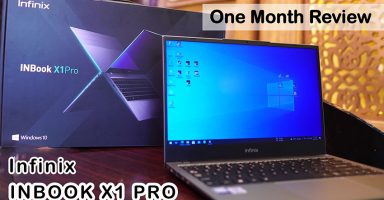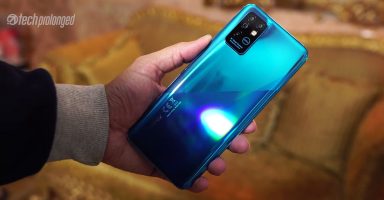We have already provided a brief design review of Nokia E6 covering the unboxing and design parts of the device. Here we are going to have a deep look inside E6 considering its camera capabilities along with a set of pictures.
8 Megapixel EDoF camera in Nokia E6 is just same as came with C7, E7 and X7. We have also published a detailed camera review of Nokia C7 comparing the results with Nokia N8.
Nokia E6 Camera Specifications
| Still images | |
|---|---|
| CMOS Sensor | 8.0 Megapixel |
| Resolution | 3264 x 2448 px |
| Digital Zoom | 2x |
| Focal length | 28 mm |
| F-Stop/Aperture | f/2.4 |
| Focus range | 50 cm to infinity |
| Image Formats | 50 cm to infinity |
| Other Features | Auto Exposure, Dual-LED Flash, Exposure Compensation, Face Detection, Full Focus, Full Screen Viewfinder, Geotagging, Red-Eye Reduction, Self Timer, Still Image Editor |
| Video Recording | |
| Resolution | 1280 x 720 px (720p) HD |
| Frame Rate | 25fps (30fps for 640×480) |
| Digital Zoom | 3x |
| Formats | H.263, H.264/AVC, MPEG-4 |
As said above the camera in E6 is similar in specifications to those what came with other recent Nokia phones e.g. C7, E7 and X7. But one thing to be noticed in Nokia E6’s camera is the F-Stop/Aperture, the Lens opening. It’s f/2.4 in E6’s camera which is larger than f/2.8 found in the above listed devices.
If you don’t have such an idea about these things in digital cameras then you might be wondering what I am talking about. Well in that case the Aperture or F-Stop are ones of those terms in digital cameras to understand which are most confusing for newbies.
What is F-Stop/Aperture?
I’ll not explain about it in detail because this article is not targeting a dedicated digital camera or this article is not for photographers/wannabees.
As this article is targeting specifically Nokia E6 and a few technical aspects of its camera which are same and a bit different from other Nokia phones. And as you are supposed to be here to read about Nokia E6 and its camera. For you the simple explanation of F-Stop/Aperture is that “The lower the value of F-Stop/Aperture, the larger the lens opening will be – Hence the more light could make through to sensor in less time and in result it increases the ability to shoot moving subjects as well as it’s suited for low light conditions”
More importantly Nokia N8, the most appreciated camera smartphone, also has the maximum aperture as f/2.8 which is not as large as in E6, f/2.4. N8 does have quite a good set of capabilities of a digital camera and photography for most of the conditions but regarding this factor of f-number/f-stop E6, should be considered as better in shooting low light with automatic settings.
Following pictures were shot indoor in a shopping mall.
(Left Nokia N8: Flash Off – 4000×2248 – 9MP) – (Right Nokia E6: Flash Off – 3264×2448 -8MP)
Well the above pictures are just to show some difference to tell about F-Stop/Aperture as how could it effect the final result of a picture. And you can see that how much bright and clear picture was shot by Nokia E6 whereas N8 couldn’t get that much brightness in same condition of the environment when both shot with automatic settings. However the manual ISO settings on N8 or E6 could let you tweak with it to give desired results.
But that’s not it. Did you check the pictures after zooming into 100%? If not then do it and notice the different parts of both the pictures so that you can see that E6, nevertheless does have a better aperture, couldn’t achieve that detail in the image which N8 clearly did. e.g. Zoom in to lower-left corner of the pictures and try to read “Chicken” (images below cropped at 100%. N8 first, E6 second from top). E6 added a lot of noise into the image all over due to applying same full focus every where in the scene. The thing is that looking at the picture at once gives you the impression that E6 did a better job. It did actually but not in every aspect. Well it’s obvious that N8 has great capability of capturing a scene into 12 Megapixels, it as well has better capability of shooting pictures with Auto Focus hence E6 shouldn’t be compare with it.


One more important aspect, as talked above, is the Full Focus support in the E6’s camera, it’s just like C7, E7 or X7. It’s fine for normal or regular photography e.g. on a trip or tour and capture the scenes around you. You can not take closer/macro shots with E6’s EDoF camera as the minimum focus range is 50cm like of other devices with EDoF cameras. But amongst C7, E7 and X7, I’ll recommend E6’s camera due to its larger aperture (Please note that we haven’t tested the camera in Nokia X7 yet so we aren’t sure for the difference with it). One thing that E6 lacks is the dedicated camera shutter button but frankly speaking while using E6 as a camera, I found it perfect in hands than any other handset. It’s perfect for single handed shooting. It really was a point & shoot experience with E6.
UPDATE: We have a review, published for the camera in Nokia X7. We have the opinion set for the camera in Nokia X7. Visit and checkout the Nokia X7 Camera with sample shots.
Checkout the following pictures taken with Nokia E6
Pictures: Night/Low Light/Day light

































